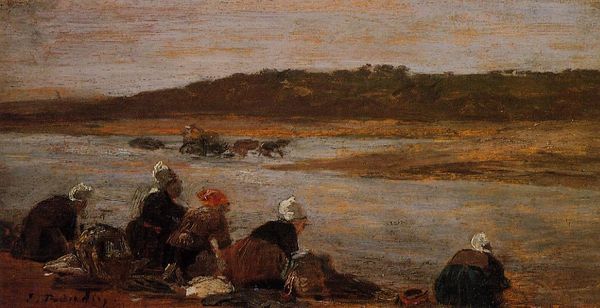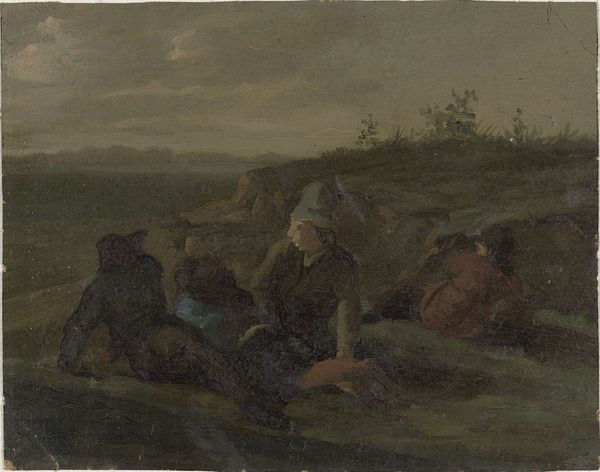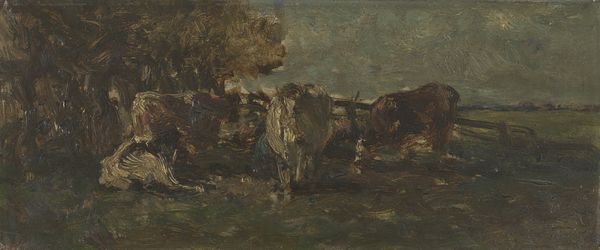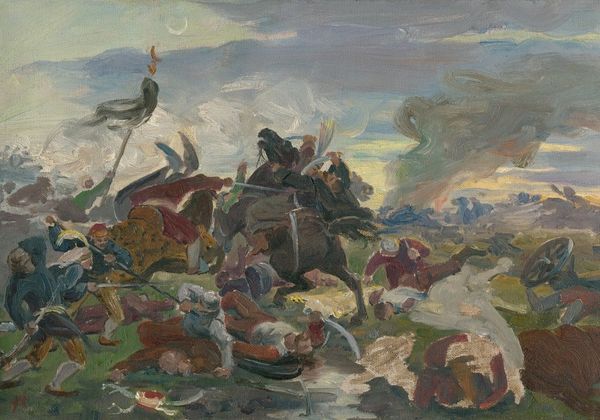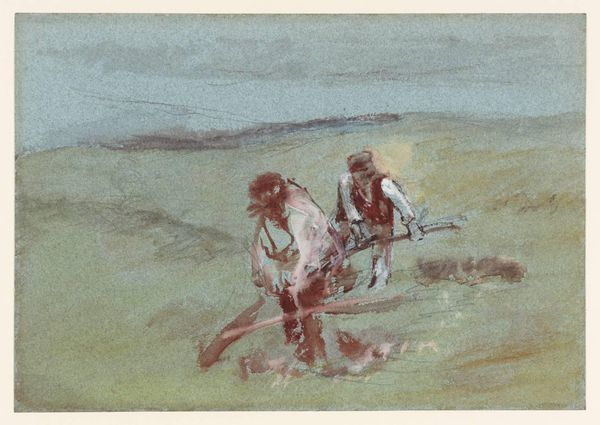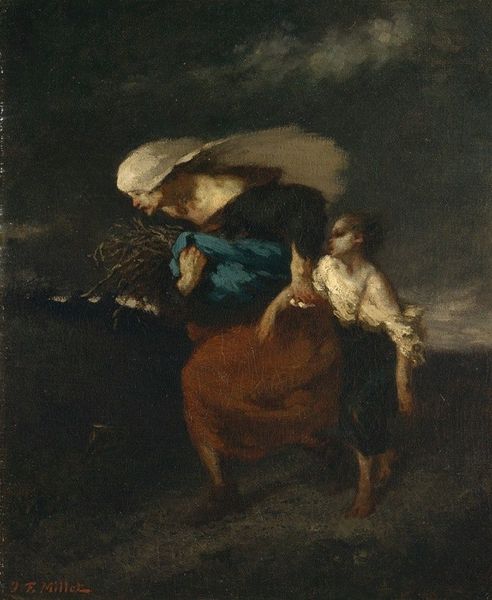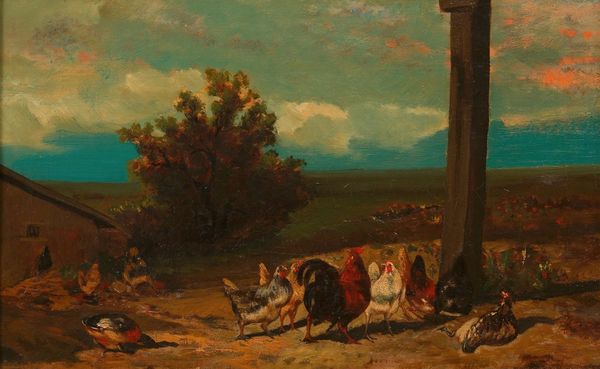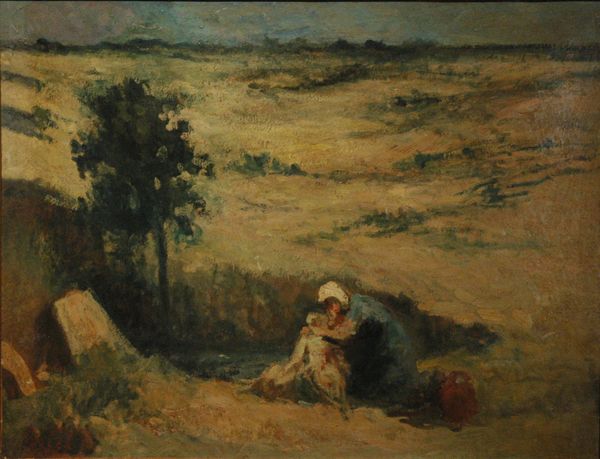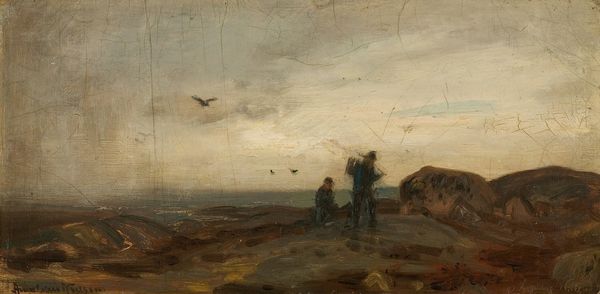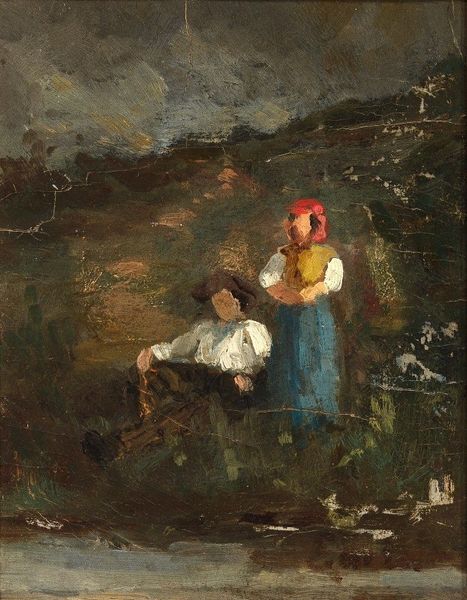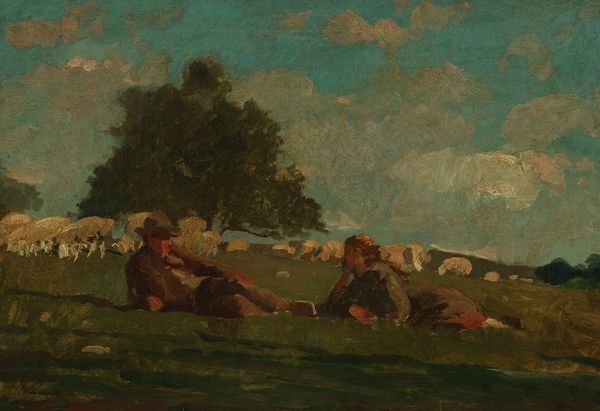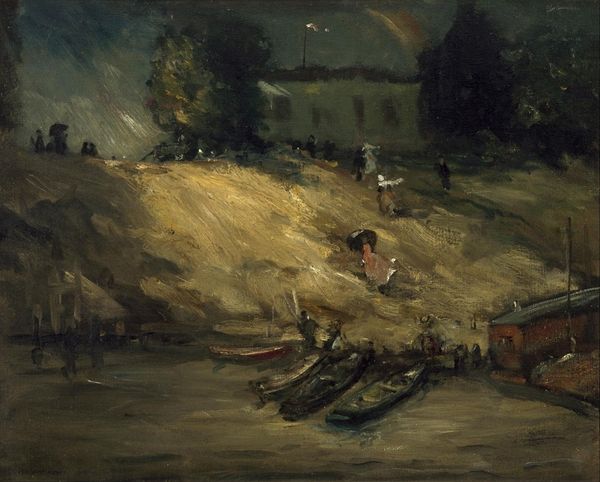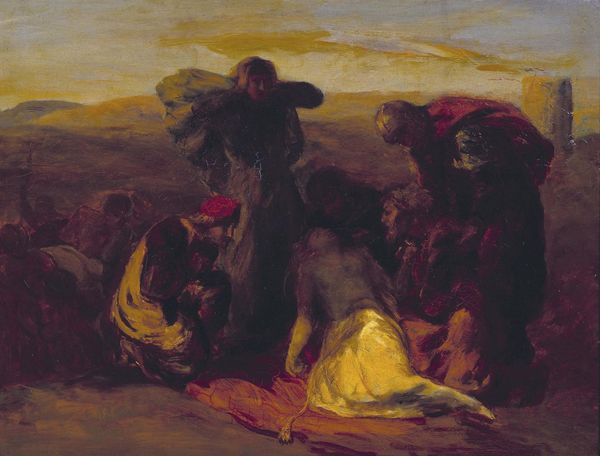
painting, plein-air, oil-paint
#
figurative
#
painting
#
impressionism
#
impressionist painting style
#
plein-air
#
oil-paint
#
landscape
#
impressionist landscape
#
oil painting
#
genre-painting
#
realism
Copyright: Public Domain: Artvee
Curator: Winslow Homer painted "Women Working in a Field" in 1867, an oil on canvas sketch capturing rural life. The brushwork alone makes it compelling. What’s your immediate impression? Editor: My first thought is one of intense, back-breaking labor. The way the figures are hunched over, almost blending into the landscape, speaks volumes about the lives of these women and their relationship to the land. Curator: Absolutely, it provides a visual record of agricultural labor practices post-Civil War. Consider the material conditions; Homer employs plein-air painting, likely a readily available canvas and oil paints, to document this scene. It is, on its surface, a straightforward representation. Editor: It's more than a record, though. This piece can also serve as a lens through which we consider the economic constraints and gendered division of labor of the time. Working-class women were essential to agricultural production, yet often rendered invisible. This image provides visibility. Curator: But it also simplifies it, doesn't it? Homer selects a moment. I’m drawn to the materiality; the brushstrokes themselves become representative of labor. You can almost feel the physical exertion. The way the earth is represented with visible brushstrokes... Editor: Agreed. However, those brushstrokes also risk romanticizing the grueling nature of their work, obscuring potential struggles. To me, that abstraction raises an ethical consideration. Does the impressionistic style elevate or dilute the women's experiences? Curator: It presents a particular viewpoint, absolutely, reflective of Homer's class. This painting becomes a commodity, entering a system of consumption divorced from its origins. But it preserves, perhaps unintentionally, the physicality of making – both within the image and within the painting itself. Editor: And how do we navigate our positionality as viewers and critics engaging with this work now, especially given issues of representation and class disparities? This simple scene becomes a window into larger, complex questions of who gets seen, who gets remembered, and under what conditions. Curator: It seems the simple act of documenting production and labor opens a deeper exploration into social relations, doesn't it? It forces us to consider these paintings not as isolated masterpieces, but as evidence of the material and social conditions that shaped their making and meanings. Editor: Precisely. By looking at it from this angle, "Women Working in a Field" encourages a broader understanding of nineteenth-century America, revealing the complicated relationship between art, labor, and social visibility.
Comments
No comments
Be the first to comment and join the conversation on the ultimate creative platform.
